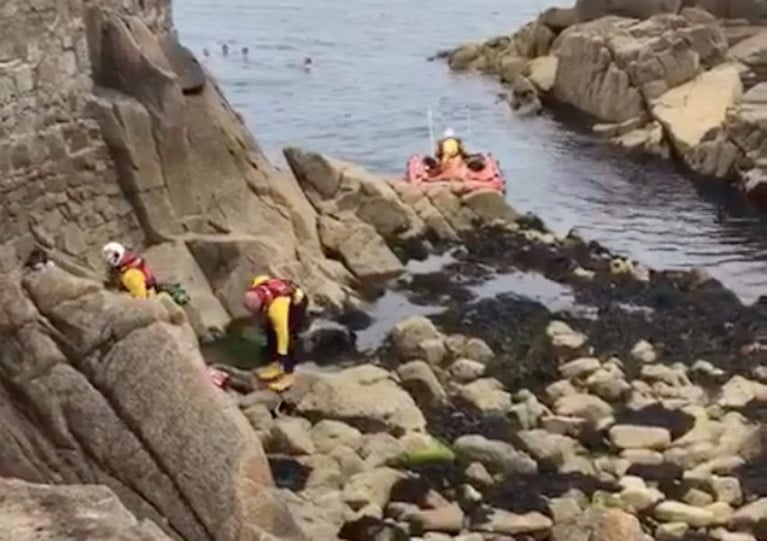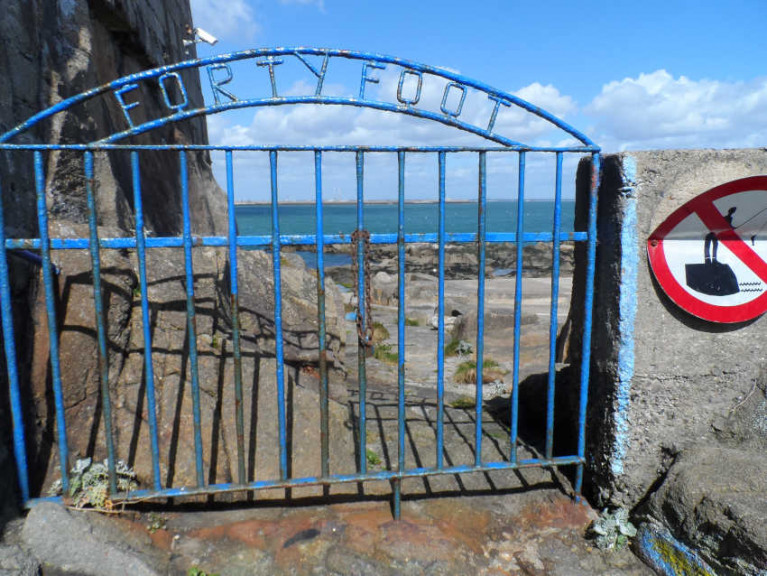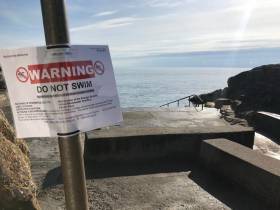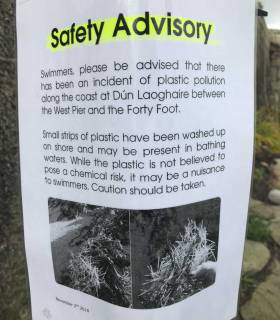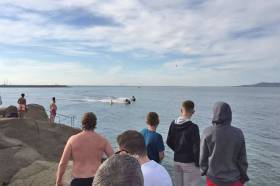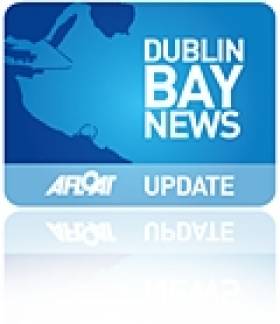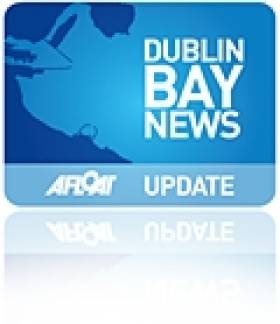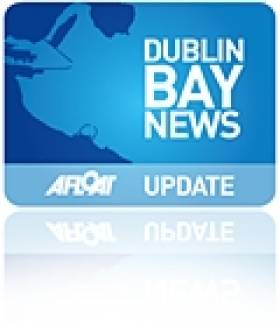Displaying items by tag: Forty Foot
Man Found 'Unresponsive' at Forty Foot Bathing Place on Dublin Bay
The alarm was raised shortly after 8 am this morning at Sandycove on Dublin Bay when a male was found unresponsive in the water at the Forty Foot Bathing Place.
Coast Guard, Ambulance Service & Gardaí are at the scene and the Garda has a cordon in place at the popular sea swim spot.
A Garda spokesman told Afloat 'No further details are currently available'.
Faller At Forty Foot Is Stretchered To Safety
Dun Laoghaire’s coastguard unit was tasked yesterday (Sunday 12 July) to assist paramedics with a casualty who had fallen down steps at the Forty Foot bathing spot.
Dun Laoghaire RNLI’s inshore lifeboat was also in attendance at the scene, where local lifeguards in Sandycove treated the casualty before the arrival of emergency services.
Dun Laoghaire Coast Guard says the patient was stabilised and stretchered to an awaiting ambulance for further care.
Forty Foot & Other Dublin Bay Bathing Spots Closed To Public Over Social Distancing Concerns
Popular bathing spots at the Forty Foot, Sandycove and Seapoint on Dublin Bay have been closed as of today (Saturday 11 April) following the latest extension of restrictions against Covid-19.
Dun Laoghaire-Rathdown County Council said the decision was made “following consultation [with] the Garda, as a result of concerns raised with social distancing compliance”.
All three bathing areas are now closed to the public until further notice, following the announcement that movement restrictions amid the Covid-19 pandemic have been extended to Tuesday 5 May.
It follows a nationwide call on Thursday by the Coastguard and the RNLI asking people not to use the sea for exercise or recreation.
Man Dies After Getting Into Difficulty At Forty Foot
BreakingNews.ie reports that a man in his 50s has died after an incident at the Forty Foot swimming spot in south Co Dublin.
The alarm was raised after the man got into difficulty in the water this afternoon (Sunday 29 September).
Emergency services removed the man to St Vincent’s Hospital, where he later died. Gardaí confirmed that investigations are ongoing.
Dublin local authorities have issued bathing ban notices for a number of popular swimming spots after a sewage leak at the Ringsend wastewater treatment plant, as RTÉ News reports.
Swimming is currently prohibited along the coast between Dollymount in North Dublin and White Rock Beach in Killiney on the Southside, just beyond Dublin Bay.
The string of bathing spots includes the enduringly popular Forty Foot in Sandycove.
Moreover, Sandymount and Merrion just south of Ringsend — where the wastewater plant was in the news earlier this year over a discharge in the Liffey — have been landed with a swimming ban for the entire 2019 bathing season due to their overall poor water quality.
RTÉ News has more on the story HERE.
Safety Advisory For Swimmers Over Plastic Pollution At Forty Foot
#Safety - Dun Laoghaire-Rathdown County Council has posted a safety advisory for swimmers in Dun Laoghaire over an incident of plastic pollution between the West Pier and the Forty Foot.
According to the local authority, “small strips of plastic” that have washed ashore in recent days may be present in bathing waters.
While the plastic poses no chemical danger, it could be a nuisance or at worst a physical risk to swimmers.
As The Irish Times reports, contractors working on the redevelopment of the Dun Laoghaire baths site are launching a clean-up operation in the affected area after “a quantity of fibres” was washed into the water during a concrete pour.
It follows community efforts led by local environmental hero Flossie Donnelly, who recently donated a second Seabin for cleaning surface debris in Dun Laoghaire Harbour to the National Yacht Club.
Dun Laoghaire Coast Guard Warns Over Motorboat & Jet Skis Putting Swimmers’ Lives At Risk
#WaterSafety - Dun Laoghaire Coast Guard has warned boaters to beware of marked swimming areas after “havoc” at the Forty Foot bathing spot on Friday afternoon (26 May).
A motor yacht and two personal water craft were witnessed “acting recklessly” as they raced between the yellow swimming markers at the popular swimming area in Sandycove, South Dublin.
Luckily no one was harmed as the vessels soon left the area when a coastguard team was dispatched to investigate.
The coastguard warned other cruisers and harbour users to steer away from the yellow markers at the Forty Foot, Seapoint and Killiney.
“They are there to designate this a safe area for swimmers to swim, so do not enter this area and keep well clear, as swimmers will swim towards these markers, potentially further or way beyond.”
Gardaí Take The Plunge For Special Olympics At The Forty Foot
#PolarPlunge - Near freezing temperatures didn't stop a troupe of hardy gardaí from leaping into the drink at the famous Forty Foot in Sandycove for their annual Polar Plunge yesterday (6 December).
As the Irish Independent reports, the 150-strong group - many in uniform or fancy dress - took to the water at the renowned Dublin Bay swimming spot as part of the Garda Síochána-sponsored event to raise funds for Special Olympics Ireland.
#FortyFoot - It's grim news for the Forty Foot's swimming club as members agreed this week to put its future up to vote.
The Irish Times reports on Thursday night's (27 November) extraordinary general meeting held in the wake of the Sandycove Bathers' Association's loss of insurance cover.
That came after a €7,000 settlement over a claim made against the club and Dun Laoghaire-Rathdown County Council by a member of the public, as covered previously on Afloat.ie.
The claim clouded a situation already made bleak by a substantial insurance payout in 2004 to a non-club-member who suffered serious injuries while diving at the Dublin Bay swimming hole made famous in James Joyce's Ulysses.
And the potential future exposure of the club's members to litigation has prompted a vote on disbanding and dropping their lease on the Forty Foot when they reconvene in two weeks' time.
The Irish Times has more on the story HERE.
Forty Foot Bathing Club's Future Up For Vote At EGM
#FortyFoot - The Sandycove Bathers' Association will hold an EGM this Thursday 27 November on its future at the famous Forty Foot after its insurer withdrew cover.
According to The Irish Times this morning, the club announced in a letter to members that its insurer Allianz has withdrawn public liability cover in the wake of a €7,000 settlement after a claim against it and Dun Laoghaire-Rathdown County Council (DLRCoCo).
As a result, the club will now vote on whether it should continue to manage and maintain the popular Dublin Bay swimming spot, which features prominently in James Joyce's Ulysses, and was in the news earlier this year after the club lifted its long-time ban on women members.
If the club does pull out, DLRCoCo says it would take over the Forty Foot and. among other things, open it to public bathing.
The Irish Times has more on the story HERE.



























